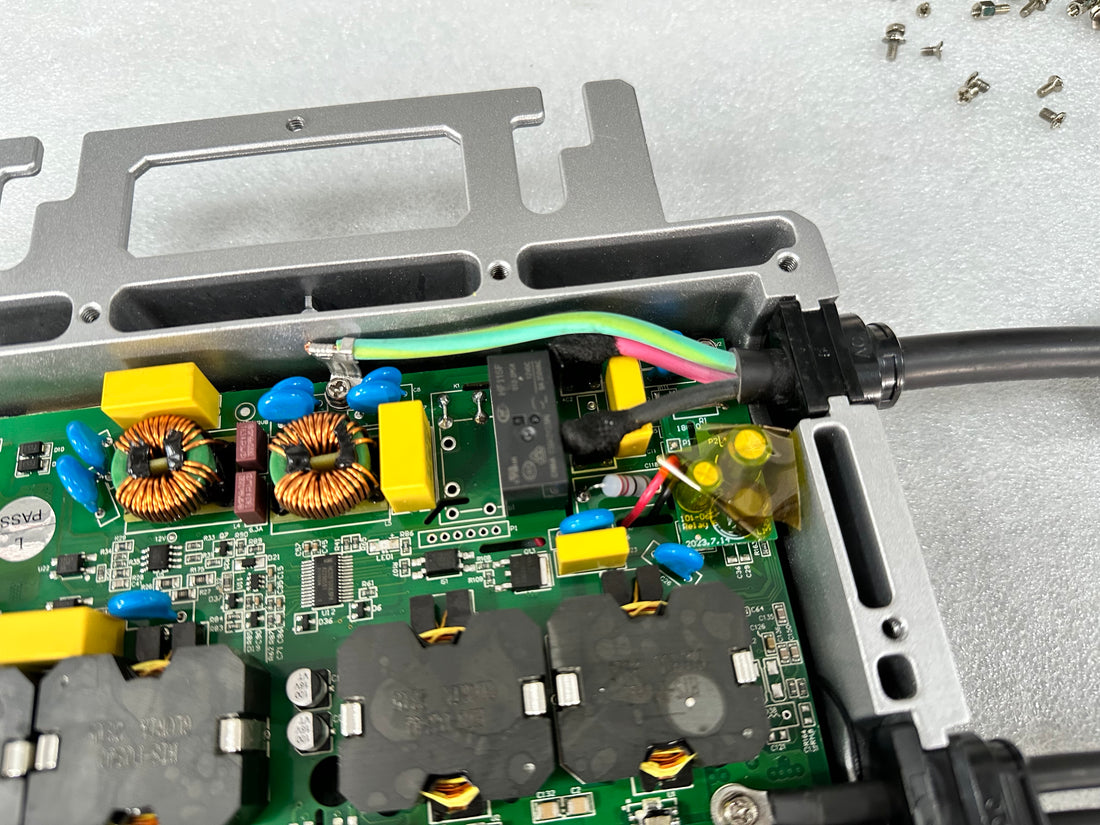What is MPPT?
First, we need to know what the "maximum power point" is. Under the same lighting conditions, photovoltaic modules will have different output currents at different operating voltages. When the photovoltaic module operates at a specific voltage, the product of the specific voltage and the output current (i.e. power) reaches the maximum value. This operating point is the maximum power point, which is also when the photovoltaic module generates the highest power generation efficiency.

However, under normal circumstances, photovoltaic power generation will be affected by various factors. For example, the stronger the sunshine, the greater the output power of the photovoltaic module; and the higher the temperature of the photovoltaic cell, the smaller the output power of the photovoltaic module. Therefore, in different environments, the maximum power point of photovoltaic modules will change with actual conditions.
How to ensure that photovoltaic modules always obtain the maximum power point under different conditions?
At this time, we need MPPT. MPPT is equivalent to the brain of photovoltaic modules. It is an automatic optimization process that can detect the power generation voltage of photovoltaic modules in real time and track the highest voltage and current value, so that photovoltaic power stations can track the maximum power point in different sunlight and temperature environments. Make the system output maximum power.
How to ensure that photovoltaic modules always obtain the maximum power point under different conditions?
At this time, we need MPPT. MPPT is equivalent to the brain of photovoltaic modules. It is an automatic optimization process that can detect the power generation voltage of photovoltaic modules in real time and track the highest voltage and current value, so that photovoltaic power stations can track the maximum power point in different sunlight and temperature environments. Make the system output maximum power.
How to track maximum power point?
There is no doubt that MPPT brings benefits to photovoltaic power plants. How do we track the maximum power point?
MPPT control in current photovoltaic cell arrays is generally accomplished through a DC-DC (direct current-direct current) conversion circuit, which can convert a fixed DC voltage into an adjustable DC voltage.
The photovoltaic cell array and the load are connected with a DC-DC circuit, and the current and voltage changes of the photovoltaic array are continuously detected through the maximum power tracking device. For linear circuits (although photovoltaic cells and DC-DC conversion circuits are both strongly nonlinear, in a very short time, we can consider them linear circuits), when the load resistance is equal to the internal resistance of the power supply, the power supply Can output maximum power.
Therefore, we can understand that as long as the equivalent resistance of the DC-DC conversion circuit is adjusted so that it is always equal to the internal resistance of the photovoltaic cell, the maximum output of the photovoltaic cell can be achieved, and the MPPT control is realized.
MPPT control in current photovoltaic cell arrays is generally accomplished through a DC-DC (direct current-direct current) conversion circuit, which can convert a fixed DC voltage into an adjustable DC voltage.
The photovoltaic cell array and the load are connected with a DC-DC circuit, and the current and voltage changes of the photovoltaic array are continuously detected through the maximum power tracking device. For linear circuits (although photovoltaic cells and DC-DC conversion circuits are both strongly nonlinear, in a very short time, we can consider them linear circuits), when the load resistance is equal to the internal resistance of the power supply, the power supply Can output maximum power.
Therefore, we can understand that as long as the equivalent resistance of the DC-DC conversion circuit is adjusted so that it is always equal to the internal resistance of the photovoltaic cell, the maximum output of the photovoltaic cell can be achieved, and the MPPT control is realized.
Practical applications of MPPT.
At this time, someone may ask: "If MPPT is so useful, why haven't I seen it before?"
In fact, MPPT is "hidden" in the inverter. Taking microinverters as an example, the component-level MPPT controller of the microinverter tracks the maximum power point of each photovoltaic module separately. This means that if a certain photovoltaic module operates poorly, it will not affect other photovoltaic modules. For example, in the entire photovoltaic system, a module is blocked by 50% of the sunlight. At this time, the maximum power point tracking control of other modules The machines will continue to maintain their maximum productivity and efficiency.
In fact, MPPT is "hidden" in the inverter. Taking microinverters as an example, the component-level MPPT controller of the microinverter tracks the maximum power point of each photovoltaic module separately. This means that if a certain photovoltaic module operates poorly, it will not affect other photovoltaic modules. For example, in the entire photovoltaic system, a module is blocked by 50% of the sunlight. At this time, the maximum power point tracking control of other modules The machines will continue to maintain their maximum productivity and efficiency.
Moreover, the micro-inverter is extremely intelligent and comes with component-level monitoring. It can monitor component-level voltage, current, power and other information. It can achieve precise positioning through layout diagrams, and can monitor the power generation status of each component remotely and in real time around the world.
Conclusion.
In order to make the photovoltaic modules always work at the maximum power point, it is particularly important to choose an inverter with MPPT function, which is an important factor affecting the power generation efficiency of the entire photovoltaic power station.
As the carrier of MPPT, microinverters can finely adjust and monitor the output power of each photovoltaic module, which is suitable for complex distributed photovoltaic scenarios. It can also be used "easily" on roofs with high shadows and complex layouts.
As the carrier of MPPT, microinverters can finely adjust and monitor the output power of each photovoltaic module, which is suitable for complex distributed photovoltaic scenarios. It can also be used "easily" on roofs with high shadows and complex layouts.

